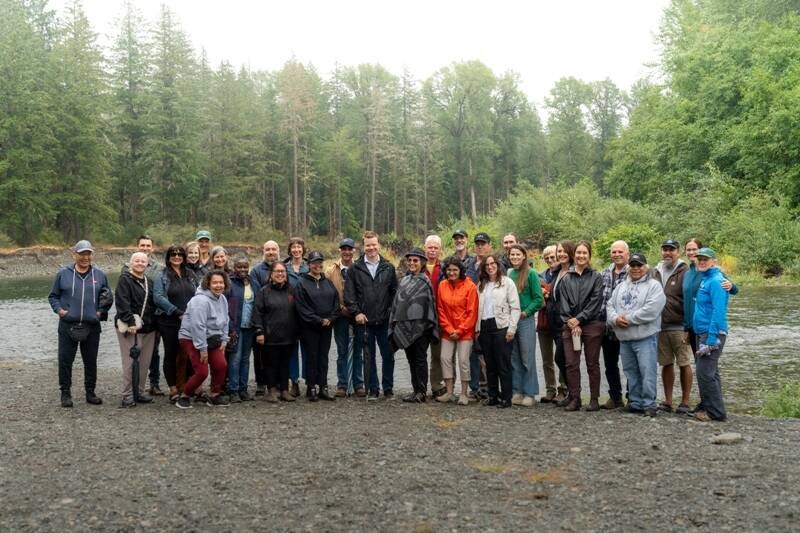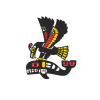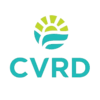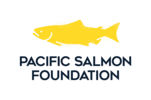Before colonial impacts, this river hosted salmon so abundant that it is said that, at times, one could walk across it on their backs.

Cowichan Watershed Board members visit the Quw’utsun Sta’lo (Cowichan River) with elected representatives and staff from Cowichan Tribes and Cowichan Valley Regional District. Photo by Graham Twomey
World Water Day reminds us how local projects can address global issues during trying times.
In Quw’utsun culture, the teaching Hulitun tst tu qa’ (Water is Life) reflects a deep understanding that water, including our oceans, lakes, rivers and creeks are essential to all life. Since time immemorial, Cowichan Peoples (Quw’utsun Mustimuhw) have understood their well-being is inseparable from the well-being of the Quw’utsun Sta’lo’ (Cowichan River).
Before colonial impacts, this river — the only designated Canadian Heritage River on Vancouver Island — hosted salmon so abundant that it is said that, at times, one could walk across it on their backs.
On Saturday, we recognized World Water Day as a timely reminder that protecting water isn’t just a local concern, it’s a global responsibility.
Around the world, rivers and freshwater sources are under threat from climate change, pollution, logging, and overdevelopment.
Here in the Cowichan Valley, we have a privileged opportunity to take action by ensuring the Quw’utsun Sta’lo’ remains healthy for generations to come.
The Crofton Mill (Domtar-Crofton), has been responsible for controlling the outflow under a provincial water licence. For decades, the rate of flow met ecological requirements for fish and other species, provided for community values like culture, food, drinking water and recreation, and supported mill jobs.
Unlike many dams, the weir has a fishway to enable fish passage (which is improved in the new weir design).
However, climate change has reduced the annual snowpack in the winter and brought longer, hotter, and drier summers.
In 2018, a broadly based public advisory group considered all the options to mitigate this added stress, and came to a consensus that it was necessary to replace the weir with a higher one, to store more water in the lake, starting in the early spring.
Low river flows have led to sewage and algae buildups that not only make swimming unsafe, but have resulted in devastating ecological impacts. In July 2023, a catastrophic fish kill wiped out over 100,000 juvenile fish.
As co-chairs of the Cowichan Watershed Board, Cowichan Tribes and the Cowichan Valley Regional District showcase the power of respect-based partnerships in addressing global challenges on a local level.
While we can’t solve climate change, we do our part to reduce our carbon footprint and protect our most precious natural resource, the Quw’utsun Sta’lo’.
Similarly, though global economic pressures are beyond our control, we can safeguard our local economy. The Cowichan weir project protects livelihoods by supporting fish (local food, guiding, etc), mill jobs and tourism, as well as creating well- paying jobs directly in construction and engineering.
In these challenging times, standing up for our communities has never been more important. Let’s be clear: building a higher weir is the best chance of saving the river from climate-induced collapse. The new weir is a science-backed, Indigenous-guided, industry-supported and environmentally necessary solution to ensure the river remains healthy for generations to come.
Rest assured, we won’t abandon this project because the risks of not building it (dry rivers, dead fish and water shortages) are far worse.
World Water Day reminds us that water security is one of the defining challenges of our time. Here, we have a choice: to stand by as global pressures threaten our economy, health, and safety, or to act to secure a future where salmon continue to return, where our communities continue to thrive, and where water remains a source of life, not crisis. We are taking action.
The Cowichan weir project is not just about today; it is an investment in the future we entrust to those who follow. It’s time to give a dam.
Learn more about the Cowichan Lake Weir Replacement Project at cowichanlakeweir.ca
 Email
Email



